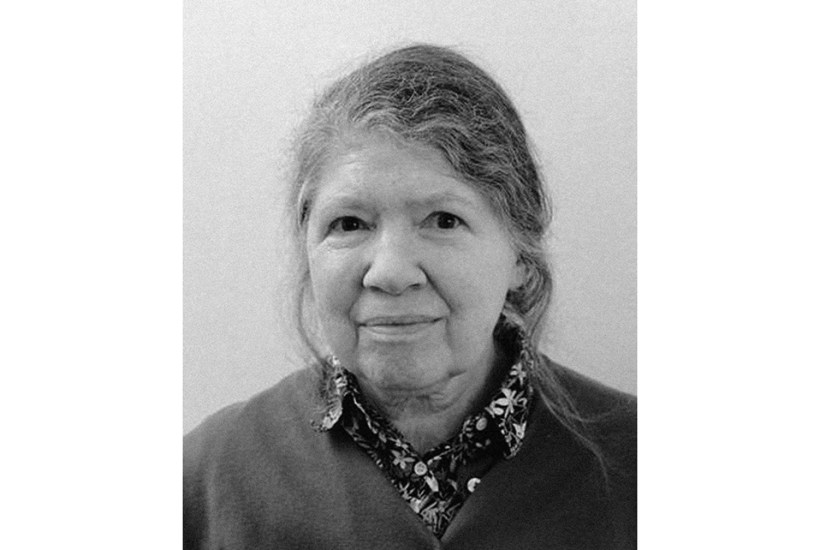Rachel Ingalls might just be the best writer of the late 20th century you’ve never heard of. Born in Boston in 1940 (her father was a professor of Sanskrit at Harvard), Ingalls dropped out of school and studied in Germany before winning a place at Radcliffe College. Shakespeare’s quadricentennial drew her to London and in 1965 she came for good, living in north London until her death, aged 78, in 2019.
Ingalls has been praised by the likes of Margaret Atwood, Joyce Carol Oates, Ursula K. Le Guin and Daniel Handler (a.k.a. Lemony Snicket). Faber’s Charles Monteith described her as ‘a genius – not a word I use lightly’ and published her debut in 1970. John Updike called her novella Mrs Caliban ‘an impeccable parable’.
Why, after such praise, did Ingalls slip under the radar? She herself suggested it was the ‘very odd, unsalable length’ of her works. She wrote 11 short story collections and novellas, and supported herself by taking various jobs, including as ballet critic for Tatler. As if answering Ingalls’s prayers beyond the grave, here comes No Love Lost, in which Faber has put together eight of her novellas into a collection that leaves you both spellbound and sucker-punched.
These eclectic fables draw upon magic realism, science fiction, Grimms’ fairy tales, Ovid, the Gothic, psychoanalysis, religion, brutal realism and horror movies. Ingalls was ‘full of contradictions, which is what I loved about her’, her friend the painter and novelist Hugh Fleetwood told me. ‘She was incredibly fey but underneath there was vanadium steel.’
In the first story, ‘Blessed Art Thou’, Anselm, a young monk, is seduced by the angel Gabriel. The experience turns him into a woman (‘Love transformed me’) and he falls pregnant while in solitary confinement. Ingalls uses Christian exegesis, while echoing the tale of Tiresias, to question the meaning of gender and spirituality: ‘Do you think we’re what our bodies are?’ The monks can accept the immaculate conception, yet deny a miracle that occurs under their noses.
The tales have a hint of the cautionary. In the story ‘Friends in the Country’, a young couple take a wrong turn when driving to a dinner party, enter a macabre mansion and find themselves unable to leave. It’s an allegory about coercive dynamics between two people and carries the unsettling sense, made explicit by Ingalls in an interview, that the ‘so-called monster was always more exciting than the drippy husband or fiancé’.
‘Something to Write Home About’ and ‘I See a Long Journey’ don’t contain toads, mildew, rape or purgatorial war zones, and instead centre on polite married couples on holiday. But these tales of domesticity, too, lead the reader up the garden path. You feel a queasy vertigo as delicately dropped clues reveal stomach-lurching betrayals.
No Love Lost bears comparison with Angela Carter’s The Bloody Chamber. But Ingalls’s darkness is offset by an air of world-weary detachment and anarchic humour. She’s interested in moral decay, the madness of crowds, the poisoned chalice of wealth, the ethics of euthanasia, refugees, the paradox of monogamy and the dehumanising effect of war. The novellas are a pharmacy of aphorisms: ‘A change of bed can cause a change of heart’; ‘What on earth would you want with somebody else’s mind? Bad enough you’re stuck with your own.’
One character says: ‘These poets and people don’t begin to live till they’re dead. So… who’s got all this glory? Dead men… Besides, all the best poets are anonymous anyhow.’ Ingalls was writing her own obituary better than anybody else could.
Got something to add? Join the discussion and comment below.
Get 10 issues for just $10
Subscribe to The Spectator Australia today for the next 10 magazine issues, plus full online access, for just $10.
You might disagree with half of it, but you’ll enjoy reading all of it. Try your first month for free, then just $2 a week for the remainder of your first year.








Comments
Don't miss out
Join the conversation with other Spectator Australia readers. Subscribe to leave a comment.
SUBSCRIBEAlready a subscriber? Log in